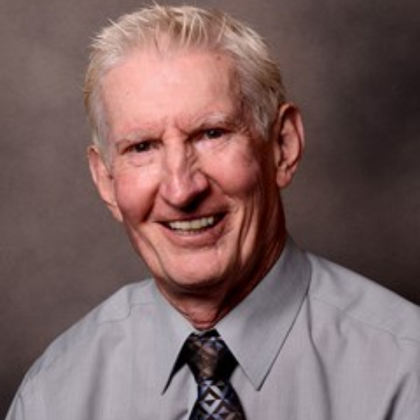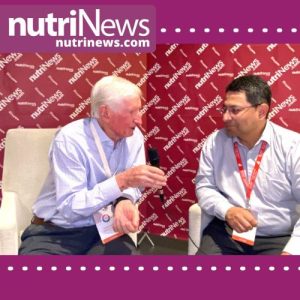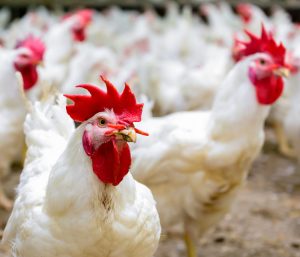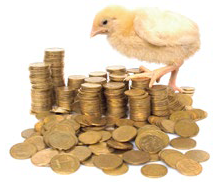Dr. Edgar Oviedo collaborator and co corresponding author for nutriNews International had the opportunity to speak about energy systems used in poultry nutrition over a short interview with renowned poultry nutritionist Dr. Craig N Coon.



Dr. Edgar Oviedo: We are pleased to welcome Dr. Craig N Coon. He is a professor at Arkansas University dedicated to breeder, layers, and broiler nutrition. He has developed an excellent method on net energy
What are the differences between the Arkansas energy system and other net energy systems?

Dr. Craig N Coon: What we see is that the broilers for which we are making this system are growing very fast and putting on a great amount of protein. That means you have to feed a lot of protein and a great amount of digestible amino acids in order for these birds to perform well. If you look at the energy system that we have they are not really made up for that. If you look at the ME systems and the way most people use ME. They use nitrogen correction and they nullify all responses regarding the contributions of amino acids, as they only look at them as a catabolic compound to be metabolized. Which is not the whole purpose of amino acids. Then if you look at net energy, it is just as bad or even worse. In the net energy systems, what they usually do is that they subtract Heat increments from AME. The main nutrient that affects heat increment is protein and amino acids. So, what you see is that this truly downgrades the value of amino acids and protein for net energy systems. Therefore, both of these systems are going in the wrong direction completely.
 Our birds in the future are going to be more of a protein type of bird. We are trying to produce protein for the world, which mean we are going to have to increase the protein deposition of these birds. Meaning we are going to have to feed more protein and amino acids to do that. That is why in my opinion al the other energy systems are going to be ineffective. And they don’t have anything to do with body composition. What we are now using is nothing more than productive energy. Arkansas NE is productive energy. It is completely performance driven. All the values that we get are based on what the bird does, so we are looking at the gain, the maintenance in the way we are really supposed to look at net energy. Net energy is gain and maintenance, and we are looking at both parts, we are not just simply takin AME and subtracting heat increment to call it NE, as that gives you nothing. We are actually giving you the real performance created by this nutrient.
Our birds in the future are going to be more of a protein type of bird. We are trying to produce protein for the world, which mean we are going to have to increase the protein deposition of these birds. Meaning we are going to have to feed more protein and amino acids to do that. That is why in my opinion al the other energy systems are going to be ineffective. And they don’t have anything to do with body composition. What we are now using is nothing more than productive energy. Arkansas NE is productive energy. It is completely performance driven. All the values that we get are based on what the bird does, so we are looking at the gain, the maintenance in the way we are really supposed to look at net energy. Net energy is gain and maintenance, and we are looking at both parts, we are not just simply takin AME and subtracting heat increment to call it NE, as that gives you nothing. We are actually giving you the real performance created by this nutrient.
Dr. Craig N Coon: I think the whole thing will be developed for something as simple as the NIR. We have to develop very good digestible nutrient variables of all of our ingredients and then with a good NIR system we can take any ingredient and find: the digestible starch, digestible fat, the digestible amino acids. We can actually look at fiber in many different ways. There are some positive aspects of fiber. If you at the soluble fibers they are actually very good. Then if you go into the insoluble fibers some those are really more of a diluent and they can lead to some negative aspects. We have to come up with a very good predictive coefficient system for all o the nutrients that our birds are using. With that anyone can take an NR value of their ingredients and know what all these nutrients are and put it together and actually have an Aransas NE value for that ingredient.
Edgar Oviedo: The other aspect would be, what are the predictions of the requirements for the birds? In what species can these productive values be used already. Are we at the point where we can use them for broilers, breeders, and layers? Or at what stage is this system?
Dr. Craig N Coon: At this point we are not formulating with it. We are simply looking and observing what these birds are doing and, in the meantime, we are formulating just like you and everybody else wit ME energy, but as we look at it with an ME basis we see there are differences with what is really happening with the bird. Therefore, in the future we are going to formulate with it. Actually, my next study will be addressing this. We are going to formulate with Arkansas NE. We are going to formulate with ME and NE. Takin the birds through the whole system with formulations looking at yields, performance and all the different factor that are directly related. Right now, we are simply comparing. It’s the same bird but we are looking at with different systems as we evaluate this information. Now we need to formulate and go to the next step. It has taken me five years to get to this point, which means it will probably take us some more time before we have it all finalized.

Dr. Edgar Oviedo: You mentioned in your presentation yesterday that there are economical benefits in applying this types o system. Could you make a final comment regarding this matter?
Dr. Craig N Coon: I think anytime you look at anything new it has to be something real and something that offers an advantage to those who are using these energy systems to produce birds. One of the things that we find is that the Arkansas NE system is strictly performance driven which makes it highly correlated to protein gain, feed conversion, protein and fat gain. It is very closely related so we can see its close relationship to yield just looking at our data. When you look at the association of Arkansas NE with yield compared to ME and NE, it is much higher. Therefore, if you take the economic value of that extra yield that we are seeing it worth million to an integrator.
Dr. Edgar Oviedo: Thank you Dr. Coon for your time. We hope to have you back for future podcasts or a webinar session maybe. It has been really interesting to have this short conversation with you. We highly appreciate it, and would also like to thank our audience for their attention.
Subscribe now to the technical magazine of animal nutrition
AUTHORS

Hybrid Rye Potential in Laying Hen Feed Rations
Gwendolyn Jones
A day in the life of phosphorus in pigs: Part I
Rafael Duran Giménez-Rico
Use of enzymes in diets for ruminants
Braulio de la Calle Campos
Minerals and Hoof Health in the Pregnant Sow
Juan Gabriel Espino
Impact of Oxidized Fats on Swine Reproduction and Offspring
Maria Alejandra Perez Alvarado